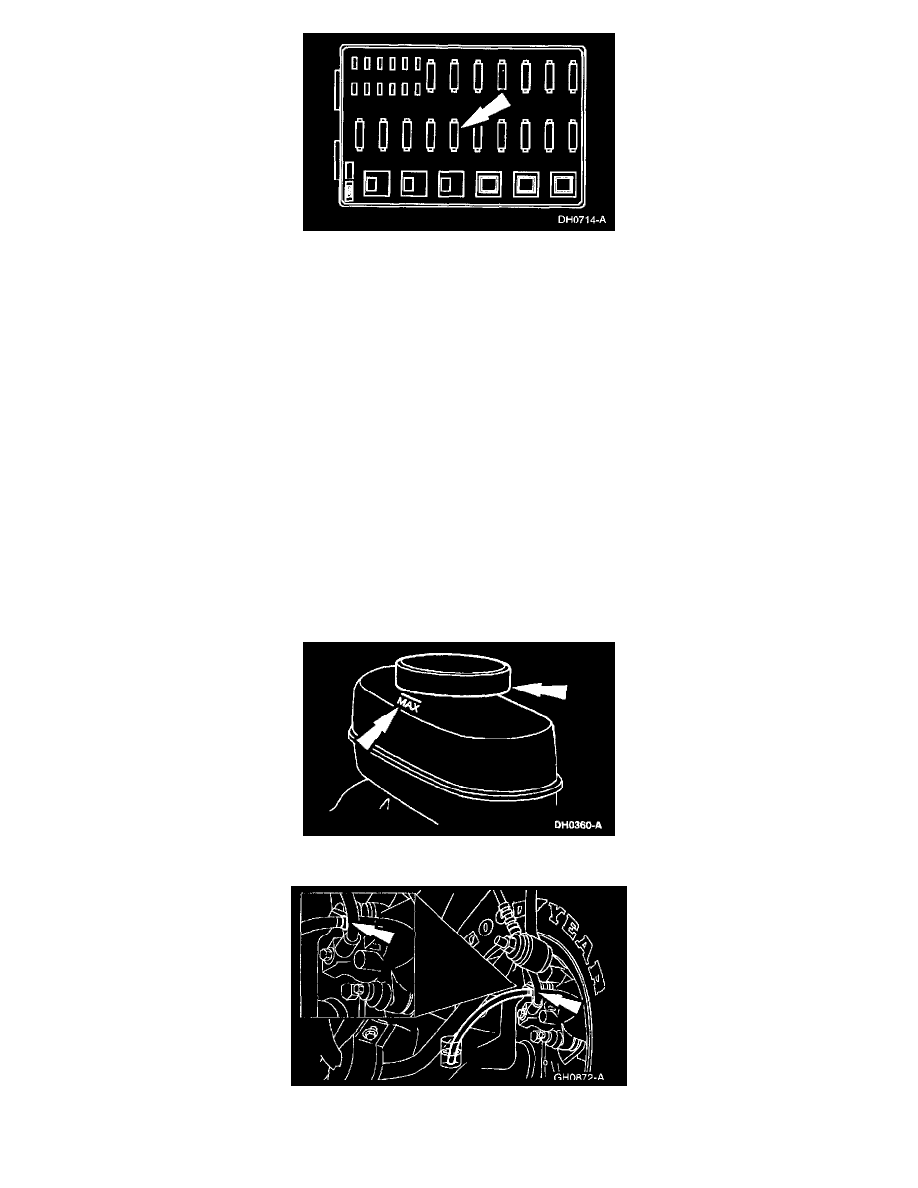F 450 2WD Super Duty V10-6.8L VIN S (1999)

4. Check the fluid level in the power steering oil reservoir and add if necessary. Install the Powertrain Control Module (PCM) fuse.
5. Start the engine.
6. With the engine running, turn the steering wheel from stop to stop twice. Turn the engine off.
7. Depress the brake pedal several times to discharge the accumulator.
8. Repeat Steps 5 and 6.
9. If foaming occurs, stop the engine and allow the foam to dissipate.
10. Repeat Steps 5 and 6 as required, until all the air is removed from the system (when the foaming stops).
Manual Bleeding
WARNING: Brake fluid contains polyglycol ethers and polyglycols. Avoid contact with eyes. Wash hands thoroughly after handling. If brake
fluid contacts eyes, flush eyes with running water for 15 minutes. Get medical attention if irritation persists. If taken internally, drink water
and induce vomiting. Get medical attention immediately.
CAUTION: Do not allow the brake master cylinder reservoir to run dry during the bleeding operation. Keep the brake master cylinder
reservoir filled with the specified brake fluid. Never reuse the brake fluid that has been drained from the hydraulic system.
CAUTION: Brake fluid is harmful to painted and plastic surfaces. If brake fluid is spilled onto a painted or plastic surface, immediately wash it
with water.
NOTE: When any part of the hydraulic system has been disconnected for repair or replacement, air may get into the system and cause spongy brake
pedal action. This requires bleeding of the hydraulic system after it has been properly connected. The hydraulic system can be bled manually or with
pressure bleeding equipment.
1. Clean all dirt from and remove the brake master cylinder filler cap and fill the brake master cylinder reservoir with the specified brake fluid.
2. Place a box end wrench on the RH rear bleeder screw. Attach a rubber drain tube to the RH rear bleeder screw and submerge the free end of the
tube in a container partially filled with clean brake fluid.
